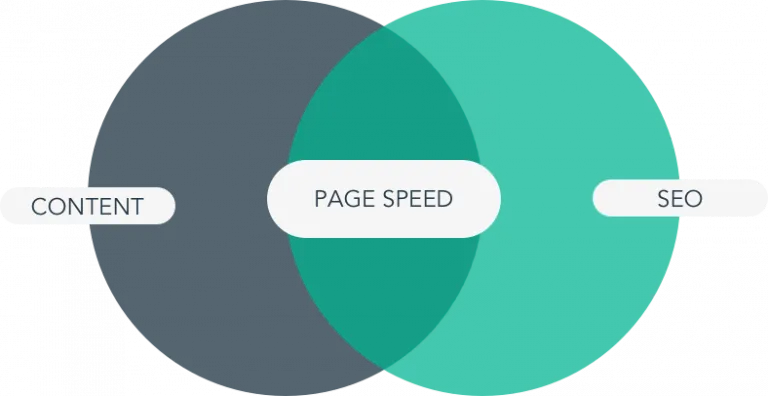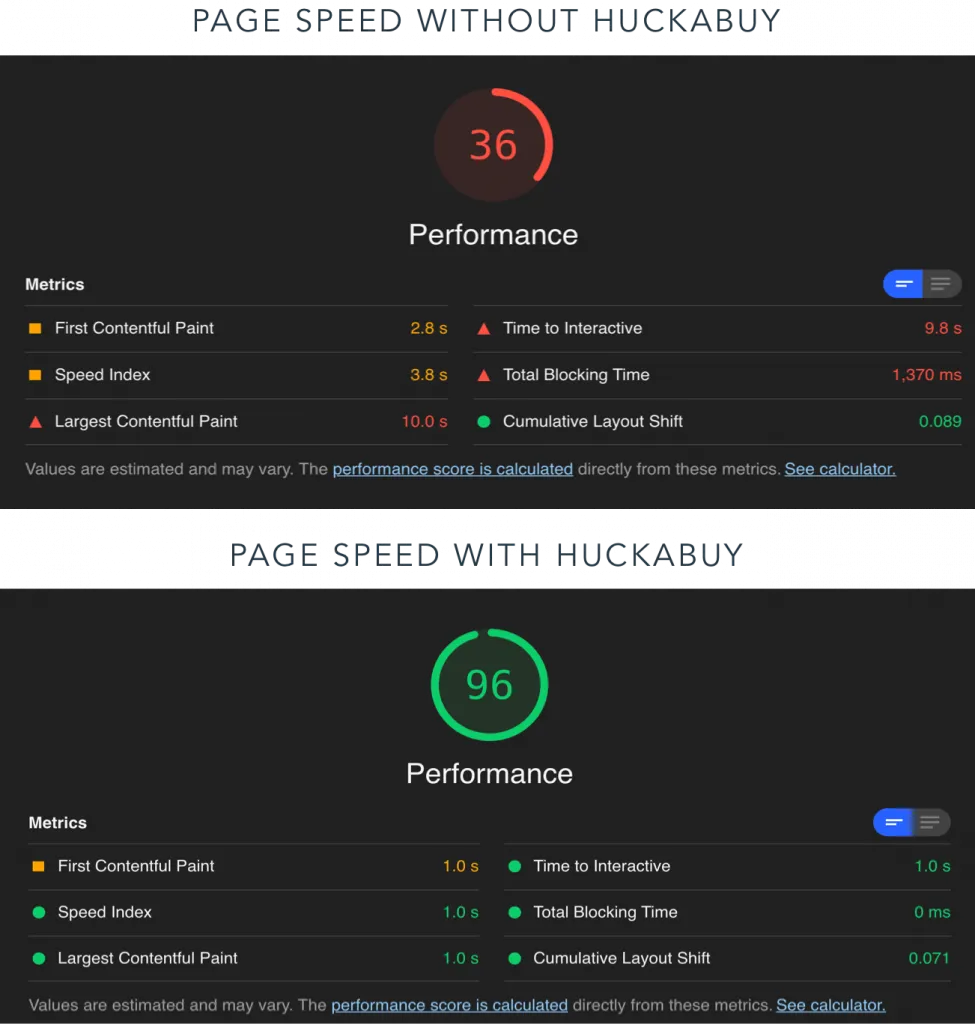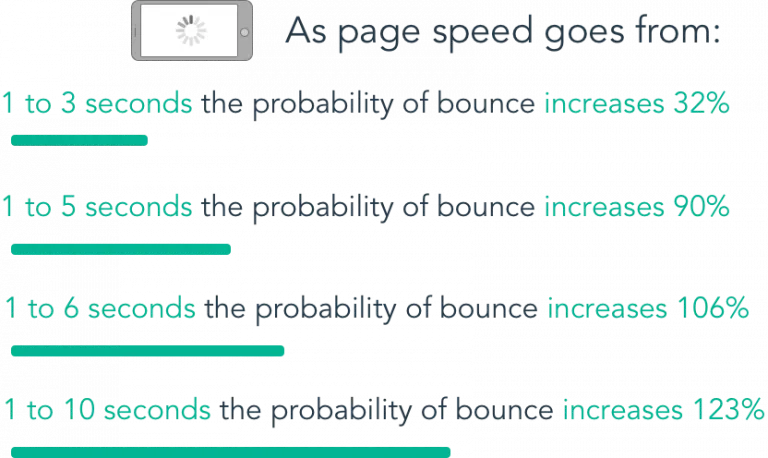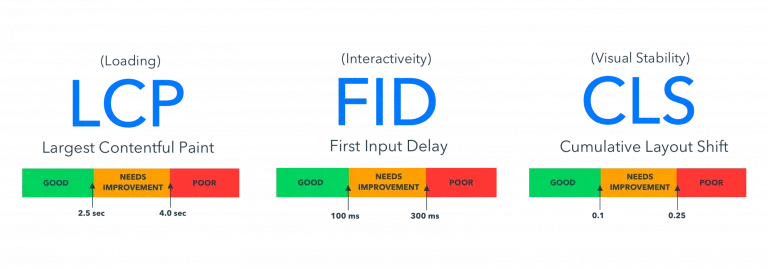Page Speed
See How It Works! Watch This Video
Published:July 2, 2020
Last Updated:August 17, 2021
Author: Lindsey Nelson
Most websites are too slow
Users and search engines demand fast page speed. Google’s own case studies show the importance of improved speeds for SEO and conversion rates.
- Slow sites face crawl budget issues where less content gets indexed, ranked, and trafficked.
- Slow sites have higher bounce rates, lower conversion rates, and generate less revenue.


Now you don’t have to be a developer to improve your page speed
The Page Speed dashboard offers more than a dozen controls so you can control your website performance based on its specific needs.
- Limit the number of HTTP requests required to deliver your site
- Reduce the number of DNS and TLS handshakes
- Improve the cache-ability of your website’s resources
"If you run a business on the web, performance is crucial." 
BOOST YOUR PAGE SPEED SCORE; MAKE YOUR SITE FASTER
Huckabuy Page Speed customers have improved their Google speed scores as much as 60 points.
This increased speed score results in:
- Increased traffic
- Reduced bounce rate
- Higher conversion rate
- More revenue

Ready to Speed Up Your Website?
What is Page Speed?
Broadly speaking, page speed, or load time, refers to the time it takes to download and display the entire content of a web page in the browser, typically measured in seconds. Page speed should also not be confused with site speed. The former refers to an individual page, whereas the latter refers to a sample of pages on a site.
No metric can fully capture the experience of page speed because the loading of a page is not a single moment in time. There are multiple moments (and corresponding metrics) in the loading process that influence user perceptions. In later sections of this page, we'll talk about different metrics that measure various aspects of page load. Because these metrics only measure a moment in the overall load of a web page, these are typically measured in milliseconds.
Understanding the unique insights offered by each of these page speed metrics is important because it allows you to optimize for the ones most important to your site’s user experience.
Calculating Page Speed
Historically, it's been difficult for webmasters to measure page speed. Most metrics don't fully reflect the user experience.
There is also the issue between lab data and field data. Lab data is website performance data collected in a controlled environment with predefined device and network settings. Field data is website performance data collected from real page loads experienced by actual users. With lab data, you are able to understand conditions on the most typical devices and network settings. With field data, you capture true real-world user experience and enable correlation to business KPIs, but there is a restricted set of metrics to work with.
Metrics that attempt to measure page speed include:
- The Load Event, which measures when the whole page has loaded.
- The First Paint, when the web browser renders anything different from what was previously on the screen.
- The First Contentful Paint, which measures when the first bit of content is rendered.
- The First Meaningful Paint, which measures when the essential content is rendered.
- The Time To Interactive, which measures the time between when the First Contentful Paint has occurred and when the page reacts to user interactions.
- The DOM ContentLoaded, which measures when the initial HTML has been fully loaded and parsed.
None of these tell the full story in isolation, nor are they reliable on a large scale. DOMContentLoaded, for example, doesn't correspond with what the user sees on the screen and First Contentful Paint, as another example, only captures the beginning of the loading experience.
Because page speed isn't only about serving content either. It's about providing both a visually complete and usable site. Focusing too much on the visuals and neglecting usability can ruin the user experience. That’s why you need to address page speed from the load time and interactivity angle and consider a “concert” of metrics. The interval between having a visually complete page and a usable one can make or break the user experience.
Here are the key metrics for loading speed:
- First Paint, which measures how long it takes the browser to render anything on page.
- First Contentful Paint, which measures how long it takes the browser to visualize the first piece of the DOM model on page.
- First Input Delay, which measures the time it takes the browser to respond to the first user interaction on page.
- Largest Contentful Paint, which measures how long it takes for the largest content in the initial viewport — content above the fold — to load.
Here are the key metrics for interactivity and usability:
- Time To Interactive, which measures the time it takes the page to become fully interactive after the user arrives. Ideally, when the page displays useful content, the page responds to user interactions within 50ms, and event handlers are registered for the most visible page elements.
- Total Blocking Time, which measures the amount of time during which longer tasks block the main thread, or how long a page is unresponsive until it becomes fully responsive. This metric shows how unresponsive a page is before it becomes fully interactive and how severely page interactivity is affected by long tasks.
- Cumulative Layout Shift, which measures how much an unexpected layout shift affects the user experience on a page. Think about when content moves around without user input or prior notification, like when an ad inserts itself over a button you were trying to click.
Factors that impact page speed
In order to understand the impact of page speed, let’s review how page load time works:
- A user enters a URL, submits form, or clicks on a link.
- The browser makes a request to the server through the network.
- A request is processed by the server.
- The server sends a response back to the browser.
- The browser starts to receive the requested page (time to first byte).
- The browser parses, loads, renders page content.
- The entire page becomes available.
There are many factors at play when considering page speed. Some of these include:
- Hosting server
- Amount of bandwidth in transit
- Web page design
- Number, type, and weight of on-page elements
- Location
- Device
- Browser type
- Images
Page Speed Standards
Page speed standards matter for at least two reasons.
First, users are impatient and have increasingly higher standards about site performance. They typically won’t wait around for more than a few seconds for a page to load and become interactive. And if it doesn’t load or if it isn’t very responsive, they won’t just bounce for that particular session. Oftentimes, they are gone for good - you won’t get a second chance to impress them. Research has shown that the stress response to delays in mobile speed, for example, is greater than waiting in the checkout line at a physical store. Understand that page speed is a foundational aspect of a good user experience. It’s typically the thing a lot of people “feel” about your online brand. Speed often determines whether customers can find your brand, trust your website, and buy from you.
Second, Google is struggling to keep up with an internet that's quickly expanding in size and complexity. They have a limited amount of resources to fulfill their mission of “organizing the world’s information in an accessible and useful way”. That means their time is fleeting on your website. They have a crawl budget. If you want to make the most of it, if you want more pages crawled and indexed, you need to architect a site that loads quickly.
How fast does a web page need to be?
- A fast web page loads in under 500 milliseconds
- An average web page loads between 500 and 1000 milliseconds
- A slow web page loads between 1 and 2 seconds.
Beyond 2 seconds is extremely slow and will significantly influence page performance. It will also deter users from using the page or getting any information from that page.

"You don’t want to frustrate your user, and we as a search engine don’t want to have users frustrated. So for us, it makes sense to consider fast websites as a little more helpful to users than very slow" 
Benefits of fast page speed
The benefits are two-fold. Page speed has a significant impact on how thoroughly both users and search engines are able to interact with your website.
Users bounce less, visit longer, convert more, and buy more on sites with fast page speed. Think about the alternative. In the same way that a customer would get frustrated waiting for an employee to help them in a physical store, they get equally (if not more) frustrated waiting for content to load and buttons to respond to their input.
Search engines crawl more pages, discover more content, and index more content on sites with fast page speed. Think about Google’s circumstances. They don’t have the time or resources to stick around to fully crawl and index sites that don’t load quickly.
According to a Google Survey, page speed is the single most important factor in user experience. So, if we look at the results, you’ll see that speed/load time topped other things we often think to be important to user experience “How easy it is to find things on the site” and “website design,” by a considerable amount.

Because speed is so important to user experience, it also has a significant impact on business. Users do not want to wait around for slow websites.

How to improve page speed
Simply put, the more success you have in business, the harder it is to maintain optimal site performance. Code, apps, scripts accumulate and become roadblocks. As brands grow and become more sophisticated, their websites become richer. And richness comes with a price. Performance issues scale as you grow and each issue has a tangible impact on the customer journey, from discovery to browsing to conversion.
Here are some basic level, but high-leverage, best practices to implement on your site to improve page speed:
- Using content delivery networks like Cloudflare
- Install a caching plugin like WP Rocket
- Minify HTML/CSS/Javascript files
- Compress your images with a short pixel
- Remove render-blocking Javascript
- Improve server response time
- Reduce the size of above the fold content
- Leverage browser caching
There are many helpful tools on the internet to find additional recommendations with in-depth directions for solutions. Here are a few that we recommend:
1. The Google Pagespeed Insights Tool.
This tool leverages lab data from the Google Lighthouse Report to generate an “overall” page speed score for your website on desktop and mobile devices. It also leverages field data from the Chrome User Experience Report to generate scores for your Core Web Vitals and whether or not you are passing that assessment. Additionally, there are sections on “Diagnostics” and “Opportunities”, which provide recommendations for how you can improve each of these scores.
2. The Google Lighthouse Report
This tool leverages lab data on six metrics - First Contentful Paint, Speed Index, Largest Contentful Paint, Time To Interactive, Total Blocking Time, and Cumulative Layout Shift - to generate a site performance score for your website. Similar to the Pagespeed Insights tool, there are sections on “Diagnostics” and “Opportunities”, which provide recommendations for how you can improve your score.
3. The Google Chrome User Experience Report
This tool leverages field data on 8 metrics, 4 of which (First Contentful Paint, Largest Contentful Paint, First Input Delay, Cumulative Layout) are displayed in the Pagespeed Insights tool, to measure how well real-world users are experiencing your website.
4. The Google Search Console - Core Web Vitals Report
This report uses field data accumulated from the Chrome User Experience report over the previous 3 month period to track and categorize website URLs based on how well (and whether) they are meeting the new Core Web Vitals requirements. It will be particularly relevant once the.
5. Google Search Console -Page Experience Report
This report shows the percentage of mobile URLs on your website with a “good” page experience, whether there are any page experience issues detected or “failing” URLs on your website, as well the number of impressions in organic search generated by those “good” URLs. It will be particularly relevant once the Core Web Vitals algorithm update is rolled out this summer.
How to get buy in to improve page speed
Most SEOs understand the importance of page speed. To get buy-in from the rest of the marketing team, web developers from the engineering team, or even the executive team if you are in a larger organization, explain the impact of page space speed on high-level financial goals. Communicate that improved site performance clearly leads to more business. Educate them on the fact that decreased site performance bleeds potential and existing customers, sometimes permanently. Expand on the fact that simple improvements can be quite high-leverage. Google has tons of case studies showing the connection between performance and revenue. You can see a whole list of stats on the relationship between performance and bounce rates and conversions here too.
While you are building your case for site performance projects, be prepared to address the following questions:
- What factors of my site most influence my business metrics?
- Which performance metrics should I focus on?
- How much faster do I need to make my site to see a measurable business impact?
- What would be the ROI for improving site performance?
- How much is slow performance costing the bottom line for my business?
- At what point should I expect to see diminishing returns on performance improvements?
THE RELATIONSHIP BETWEEN PAGE SPEED AND SEO
Google has been obsessed with page speed for over a decade. In 2010, they made desktop page speed a ranking factor. Then in 2018, they made mobile page speed a ranking factor. And in June 2021, they will be introducing a whole new set of performance-related ranking factors called “Core Web Vitals”.
With that said, there are over 200 ranking factors that make up Google’s algorithm and some have more weight than others. How important is page speed in the mix? It’s less important than the relevance and quality of the page’s content. You could be the fastest website on the internet, for example, but that won’t get you very high in the search engine rankings if the content isn’t great as well. As long as your page speed is in a reasonable range, it’s not going to hurt you.
That said, there are plenty of cases where page speed plays an important role in search results. Imagine a scenario, for example, where two sites are competing for a key industry query, they both have great content on the subject matter, but one loads faster and is more responsive than the other. In that case, page speed would serve as a sort of tie-breaking factor in which result is ranked higher.
Page speed has many indirect effects on search engine optimization as well.
If your site is slow, Google probably won’t put your crawl budget to optimal use. Fewer pages will be crawled. Portions of your website might remain totally unknown to Google. That means new and updated content won’t be discovered and added to search results as frequently, which of course means fewer opportunities to rank, garner impressions, and drive more organic traffic to the site.
Likewise, if your site is slow and unresponsive, users will probably get frustrated, spend less time on pages, visit fewer pages, bounce more often, convert less often, and are less likely to return ever again to find information or do business. Google considers a lot of these metrics in their algorithm too.
As mentioned earlier, page speed has renewed interest in the SEO community given the rollout of the Core Web Vitals update in the summer of 2021. New metrics - Largest Contentful Paint, First Input Delay, and Cumulative Layout Shift - are being introduced to measure the quality of a site’s user experience. Now, webmasters will have to focus improvements around how quickly the most important content in the initial window appears, how responsive buttons and links are, and how visually stable the page remains as new elements are loaded.

Watch the Page Speed Video
What you'll learn in this video
- How page speed impacts business
- How to define page speed
- Factors that impact page speed
- Key metrics to focus on for user experience
- The impact of page speed on SEO
FAQ
WHAT IS PAGE SPEED?
Broadly speaking, page speed refers to the time it takes to download and display the entire content of a page in the web browser, typically measured in seconds. No metric can fully capture the experience of page speed because the loading of a page is not a single moment in time. There are multiple moments (and corresponding metrics) in the loading process that influence user perceptions
WHY DOES PAGE SPEED MATTER FOR SEO?
Page speed matters for SEO because it’s a Google search ranking factor on mobile and desktop devices. It will become even more important in the summer of 2021 when Google rolls out the “Core Web Vitals” update, which adds new user experience ranking factors to its algorithm as well.
HOW DOES GOOGLE MEASURE PAGE SPEED?
Google measures page speed based on a variety of metrics using lab data from the Google Lighthouse report and field data from the Chrome User Experience report.
WHAT ARE THE BENEFITS OF IMPROVED PAGE SPEED?
From a user standpoint, improving your page speed has been shown to reduce bounce rates, increase the length of site sessions and number of page views, improve conversion rates, and increase revenue. From a search engine standpoint, improving your page speed has been shown to help Google discover and index more new and updated content from your website in a given crawling session.
HOW DO YOU IMPROVE PAGE SPEED?
Start by plugging your website into Google tools and reports like Pagespeed Insights and Lighthouse to see the improvements you need to make and the associated suggestions for how to make them. Google does a good job of leading you to page speed best practices in these tools and reports. If you wish to optimize the entire process, consider using a software solution like Huckabuy Page Speed.